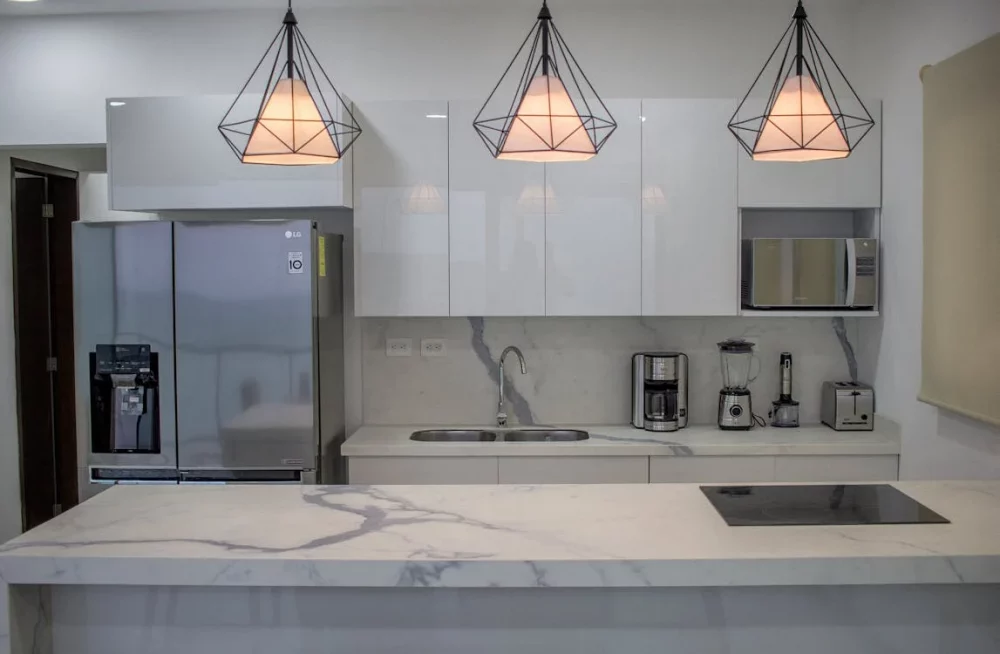Dealing with Condensation Build-Up: Workable Ways to Control Wetness in Kitchens and Bathrooms

In places in the house where humidity levels are often high, like bathrooms and kitchens, condensation can build up. Mold and mildew can grow on surfaces that are wet, which is not only ugly but can also damage paint, wallpaper, and even structural parts. We will talk about the reasons behind condensation buildup and give you useful tips on how to fix and avoid this problem so that your home stays healthy and comfy.
How to Understand Condensation
When warm, wet air hits cooler surfaces, the water vapor in the air turns into liquid moisture. This is called condensation. Showering, cooking, and using machines that make steam can raise the humidity level in bathrooms and kitchens by a large amount, which can cause condensation to form on walls, windows, and other surfaces. If condensation isn’t stopped, it can make a great place for mold and mildew to grow, which can be bad for your health and the structure of your house.
Figuring Out What Caused It
To successfully fight condensation buildup, you need to know what causes it in the first place. A common cause is a lack of ventilation, which keeps moist air from escaping and lets it stay in small areas. Condensation can also happen when warm, humid air comes into touch with cooler surfaces, like exterior walls and windows, because of poor insulation. Also, air leaks and drafts can make the problem worse by letting cold air into the house, which creates temperature differences that make mist more likely to form.
Solutions That Work
Getting rid of condensation buildup needs a multifaceted method that deals with both the problem’s causes and its effects. Here are some useful ideas to think about:
- Make the air flow better: Putting exhaust fans in bathrooms and kitchens can help get rid of extra wetness in the air, which makes condensation less likely. Make sure the fans are the right size for the room and have openings that lead to the outside so that wetness doesn’t come back into the house.
- Use dehumidifiers: Using a dehumidifier can help keep humidity levels at the right level and stop problems caused by wetness in places where condensation is a regular problem. Dehumidifiers should be placed in bathrooms, kitchens, basements, and other places where moisture likes to build up.
- Fix any air leaks: Check windows, doors, and other areas for air leaks and use weather-stripping or caulk to stop cold air from coming in. This will help keep the temperature inside more stable and make it less likely for condensation to form on surfaces.
- Add more insulation: Adding insulation to the floors, walls, and ceilings can help keep the temperature inside stable and reduce humidity by stopping heat from moving between the inside and outside. Places that tend to get damp, like outside walls and attics, might benefit from having insulation with a high R-value put in.
- Put up vapor barriers: Bathrooms and crawl spaces are two places where moisture leakage is a problem. Putting up vapor barriers can help stop moisture from moving into the home’s interior. To keep condensation from forming in wall spaces, vapor barriers should be put up on the warm side of insulated surfaces.
- Keep an eye on indoor humidity: Get a hygrometer to keep an eye on the humidity levels inside and do what you need to do to keep things in good shape. To avoid condensation and mold growth, the humidity inside should ideally be kept between 30% and 50%.
- Check and Maintain HVAC Systems: Make sure your heating, ventilation, and air conditioning (HVAC) systems are working well by checking and maintaining them on a regular basis. If you need to, clean or change the air filters, and have your system serviced by a professional to take care of any problems that could cause condensation to build up.
- Use Materials That Can Handle Moisture: When remodeling or redoing bathrooms and kitchens, pick materials that can handle moisture, like waterproof paint, tile, and grout, to stop water damage and mold growth. Avoid things like untreated wood and walls that are porous and easily soak up water.
Conclusion
Not taking care of condensation buildup in bathrooms and kitchens can make the problem last for a long time and do damage. Homeowners can keep their homes healthy and comfortable and protect themselves from moisture-related problems by knowing what causes condensation and putting effective solutions into action. Getting rid of condensation needs a complete plan that includes fixing the problem’s cause and its signs, like adding more air and insulation and using dehumidifiers and materials that don’t absorb water. Homeowners can enjoy mold-free, dry, and clean living areas for years to come if they take preventative steps and do regular maintenance.